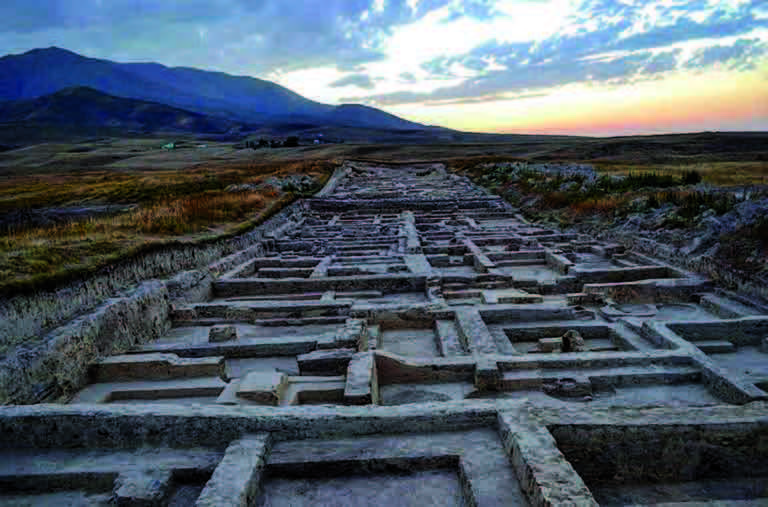TO THE QUESTION ABOUT SEMIOTICS OF THE SPACE OF THE KASTEK SETTLEMENT: FUNCTIONAL ANALYSIS OF ARTIFACTS
DOI:
https://doi.org/10.52967/akz2018.1-2.1-2.190.200Keywords:
archaeology, Jetysu, Middle Ages, semiotics of space, medieval urbanism, Turks, Karluks, Karakhanids, Turkic urban culture, religion, civilization, sacred artifactsAbstract
The article provides a semiotic analysis of the urban space of the medieval city of Kastek. In the era of the Turkic Kaganate and subsequent ethnocultural and state formations with a Turkic political dominant, the process of urbanization in the marginal zones of the sedentary agricultural culture intensified. In the pre-Mongol era, the local urban complex with general Muslim standards and standards in its medieval incarnation, motley multilingualism and ethnic assimilation of Sogdians and various Turkic-speaking peoples within the Karakhanid state, which is a model of medieval urbanized culture, is firmly established. Also on the materials of artifacts found during the excavations, reconstruction of some ritual and everyday practices characteristic of the urban culture of the medieval Turks Zhetysu was made. The functional analysis of artifacts proves that utilitarian objects and actions in traditional culture are imbued with symbols and there are equally, both everyday objects and sacred works of art of the urban culture of the Turks.
References
Baipakov, K. M., Ternovaya, G. A. 2005. Religii i kul’ty srednevekovogo Kazakhstana. (Religions and cults of medieval Kazakhstan). Almaty: «Baur» Publ. (in Russian).
Bichurin, N. Ya. 1950. Sobraniye svedeniy o narodah, obitavshih v Sredney Azii v drevniye vremena (Collection of information about the peoples who lived in Central Asia in ancient times), 1. Moscow–Leningrad: Academy of Sciences of the USSR (in Russian).
Gerodot. 1972. Istoriya v devyati knigakh. (The history in nine books) / Translation and footnotes Stratanovsky, G. A. 4 kn. Leningrad: “Nauka” Publ. (in Russian).
Zilivinskaya, E. D. 2013. In Izvestiya Akademii nauk Kazahstana (News of the National Academy of Sciences of Kazakhstan. Ser. societies. and humanity. Sciences), 3 (289), 100-109 (in Russian).
Levina, L. M. 1996. Etnokul’turnaya istoriya Vostochnogo Priaral’ya (v pervom tysyacheletii n.e.) (Ethnocultural history of Eastern Aral (in the first millennium AD)). Moscow: “Vostochnaya literature” Publ. (in Russian).
Nurzhanov, A. A., Ternovaya, G. A. 2014. In Trudy «IV» 20th Vserosssiiskogo arheologicheskogo s’ezda (Proceedings of the “IV” of the XX All-Russian Archeological Congress), 2. Kazan: “Otechectvo” Publ., 312-316 (in Russian).
Polos’mak, N. V. 2006. In Vestnik istorii, literatury, iskusstva (History Bulletin of literature, art), 3, 7-18 (in Russian).
Rudenko, S. I. 1952. Gornoaltayskiye nakhodki i skify (Altai finds and Scythians). Moscow–Leningrad: Academy of Sciences of the USSR (in Russian).
Smagulov, Ye. A. 2005. In Kul’turnoe nasledie Kazahstana. Otkrytiya, problemy, perspektivy (Cultural heritage of Kazakhstan. Discoveries, problems, prospects). Almaty: Bulletin Kazakh National Pedagogical University named Abay, 486-491 (in Russian).

Downloads
Published
How to Cite
Issue
Section
License
Copyright (c) 2018 Nurzhanov Arnabay A.

This work is licensed under a Creative Commons Attribution-NonCommercial 4.0 International License.






